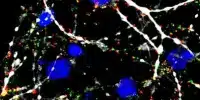Skin prick tests, blood tests, and oral food challenges are common methods used in food allergy testing. These tests are used to identify specific allergens that may cause allergic reactions in people. Anaphylaxis is a severe, potentially fatal allergic reaction that can occur quickly after being exposed to an allergen.
Measuring skin water loss during food allergy tests may aid in the prediction of anaphylaxis and the safety of patients. The method is designed to detect life-threatening reactions before epinephrine injections are required. Food allergies can quickly turn a simple meal into a potentially fatal situation.
Anaphylaxis, a severe allergic reaction characterized by a skin rash, nausea, vomiting, difficulty breathing, and shock, sends 200,000 people to the emergency room in the United States each year. An accurate diagnosis is critical because identifying a food allergy can mean the difference between life and death.
This method could enhance the ability to detect and predict anaphylaxis during oral food challenges prior to the need for epinephrine, greatly improving patient safety and comfort.
Charles Schuler
Oral food challenges, in which a patient consumes increasing doses of the suspected food allergen up to a full serving under the supervision of a medical provider, are the diagnostic gold standard because skin and blood allergy tests have high false positive rates. Despite being a highly accurate diagnostic test, oral food challenges frequently result in anaphylaxis, necessitating an epinephrine injection.
A team of University of Michigan researchers developed a method that measures water loss from the skin to predict anaphylaxis during oral food challenges before it becomes clinically evident.
The results are published in The Journal of Clinical Investigation.
“This method could enhance the ability to detect and predict anaphylaxis during oral food challenges prior to the need for epinephrine, greatly improving patient safety and comfort,” said Charles Schuler, M.D., lead author of the study and an immunologist at Michigan Medicine.

Building on existing research
The dilation or widening of the blood vessels during anaphylaxis increases heat and water loss from the skin’s surface. Previous research looked at facial thermography, which uses a specialized camera to detect heat patterns emitted by the skin, as a method to predict anaphylaxis. However, this method requires optics expertise, tightly controlled conditions, and the patient to sit still for an extended period of time, making it an impractical choice, particularly for assessing food allergies in children.
The researchers validated the use of transepidermal water loss, a measurement that represents the amount of water that escapes from a given skin area per hour, by comparing its ability to detect anaphylaxis with biochemical and clinical observation methods. They found that transepidermal water loss increases during food allergy reactions and anaphylaxis.
The rise in skin water loss correlated with biochemical markers of anaphylaxis and substantially preceded clinical detection of anaphylaxis.
“Transepidermal water loss measurement can be done in office without specialized equipment, affixed to the skin and works in children making it a vast improvement from previous attempts at early anaphylaxis detection methods,” Schuler said in a statement.
Predicting Peanut Anaphylaxis and Reducing Epinephrine, a pilot clinical trial that monitors transepidermal water loss from the forearm during a peanut allergy food challenge, is currently recruiting participants aged 6 months to 5 years old. The findings will aid in determining “stopping rules” to end oral food challenges and, hopefully, reduce the need for epinephrine injections.
















